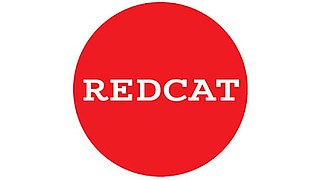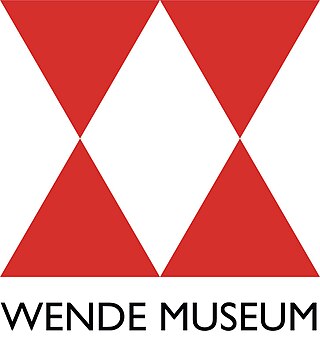The Portland Institute for Contemporary Art (PICA) is a contemporary performance and visual arts organization in Portland in the U.S. state of Oregon. PICA was founded in 1995 by Kristy Edmunds. Since 2003, it has presented the annual Time-Based Art Festival (TBA) every September in Portland, featuring contemporary and experimental visual art, dance, theatre, film/video, music, and educational and public programs from local, national, and international artists. As of November 2017, it is led by Executive Director Victoria Frey and Artistic Directors Roya Amirsoleymani, Erin Boberg Doughton, and Kristan Kennedy.
Michael Max Asher was a conceptual artist, described by The New York Times as "among the patron saints of the Conceptual Art phylum known as Institutional Critique, an often esoteric dissection of the assumptions that govern how we perceive art." Rather than designing new art objects, Asher typically altered the existing environment, by repositioning or removing artworks, walls, facades, etc.

David Abram Antin was an American poet, art critic, performance artist, and university professor.

Eleanor Antin is an American performance artist, film-maker, installation artist, conceptual artist, feminist artist, and university professor.

Roy and Edna Disney CalArts Theater (REDCAT) is an interdisciplinary contemporary arts center for innovative visual, performing and media arts in downtown Los Angeles, California, located inside the Walt Disney Concert Hall complex. Named for Roy O. Disney and his wife, it was opened in November 2003 as an extension of the California Institute of the Arts' mission into downtown Los Angeles.

The Institute of Contemporary Art, Los Angeles, formerly known as the Santa Monica Museum of Art (SMMoA), is a contemporary art museum in Los Angeles, California, United States. As an independent and non-collecting art museum, it exhibits the work of local, national, and international contemporary artists. Until May 2015, the museum was based at the Bergamot Station Arts Center in Santa Monica, California. In May 2016, the museum announced an official name change to the Institute of Contemporary Art, Los Angeles and its relocation to Los Angeles's Downtown Arts District. The museum reopened to the public in September 2017.
The Woman's Building was a non-profit arts and education center located in Los Angeles, California. The Woman's Building focused on feminist art and served as a venue for the women's movement and was spearheaded by artist Judy Chicago, graphic designer Sheila Levrant de Bretteville and art historian Arlene Raven. The center was open from 1973 until 1991. During its existence, the Los Angeles Times called the Woman's Building a "feminist mecca."
Judy Fiskin is an American artist working in photography and video, and a member of the art school faculty at California Institute of the Arts. Her videos have been screened in the Documentary Fortnight series at the Museum of Modern Art in New York, at the Los Angeles County Museum of Art, the Hammer Museum in Los Angeles, and at the J. Paul Getty Museum in Los Angeles; her photographs have been shown at MOCA, the Museum of Contemporary Art in Los Angeles, at the Getty Museum in Los Angeles, at The New Museum in New York City, and at the Pompidou Center in Paris.

The Getty Research Institute (GRI), located at the Getty Center in Los Angeles, California, is "dedicated to furthering knowledge and advancing understanding of the visual arts".
Located in Hollywood, Los Angeles Contemporary Exhibitions (LACE) is a nonprofit exhibition space and archive of the visual arts for the city of Los Angeles, California, United States, currently under the leadership of Sarah Russin.
New Langton Arts was a not-for-profit arts organization focusing on contemporary art founded in 1975 and located the South of Market neighborhood in San Francisco, California. Part of the first wave of alternative art spaces in the United States, and New Langton Arts was a leader in exhibiting new media forms in art and involving artists in the decision-making process. Its first directors were Judy Moran and Renny Pritikin.

The Los Angeles Municipal Art Gallery is located in the Barnsdall Art Park in Los Angeles, California. It focuses on the arts and artists of Southern California. The gallery was first established in 1954.
Meg Linton is an American curator of contemporary art and a writer. Her curatorial efforts have ranged from historical investigations such as "Doin’ It in Public: Feminism and Art at the Woman’s Building", "The Los Angeles School: Karl Benjamin, Lorser Feitelson, Frederick Hammersley, June Harwood, Helen Lundeberg, John McLaughlin", and "In the Land of Retinal Delights: The Juxtapoz Factor" to showcasing the work of single artists who are stylistically different such as "Alison Saar: STILL.. .", "Robert Williams: Through Prehensile Eye," and "Joan Tanner: On Tenderhook" to group exhibitions such as "Mexicali Biennial 2010," "Do It Now: Live Green!" and "Tapping the Third Realm."

Virginia Dwan was an American art collector, art patron, philanthropist, and founder of the Dwan Light Sanctuary in Montezuma, New Mexico. She was the former owner and executive director of Dwan Gallery, Los Angeles (1959–1967) and Dwan Gallery New York (1965–1971), a contemporary art gallery closely identified with the American movements of Minimalism, Conceptual Art, and Earthworks.

The Wende Museum is an art museum, historical archive of the Cold War, and center for creative community engagement in Culver City, California.

Nancy Buchanan is a Los Angeles-based artist best known for her work in installation, performance, and video art. She played a central role in the feminist art movement in Los Angeles in the 1970s. Her work has been exhibited widely and is collected by major museums including the Museum of Modern Art and the Centre Pompidou.
Kathy Rae Huffman is an American curator, writer, producer, researcher, lecturer and expert for video and media art. Since the early 1980s, Huffman is said to have helped establish video and new media art, online and interactive art, installation and performance art in the visual arts world. She has curated, written about, and coordinated events for numerous international art institutes, consulted and juried for festivals and alternative arts organisations. Huffman not only introduced video and digital computer art to museum exhibitions, she also pioneered tirelessly to bring television channels and video artists together, in order to show video artworks on TV. From the early 1990s until 2014, Huffman was based in Europe, and embraced early net art and interactive online environments, a curatorial practice that continues. In 1997, she co-founded the Faces mailing list and online community for women working with art, gender and technology. Till today, Huffman is working in the US, in Canada and in Europe.
Charlotte Nalle Eyerman is an American museum director and curator and expert in 19th century French art. She was appointed Director and Chief Curator of the JPMorgan Chase art collection in 2017. She is a member of the board of trustees at Accountability Lab. Eyerman has also served as Director and chief executive officer of the Monterey Museum of Art (2010–2013), and as Director of the Gagosian Gallery, Beverly Hills.

Ron Linden is a California abstract painter, independent curator, and associate professor of art at Los Angeles Harbor College, Wilmington. He lives and works in the San Pedro area of Los Angeles.
Lynn Zelevansky is an American art historian and curator. Formerly Henry Heinz II Director of the Carnegie Museum of Art, she is currently based in New York City. Zelevansky curated "Love Forever: Yayoi Kusama" (1998) and "Beyond Geometry: Experiments in Form" (2004) for Los Angeles County Museum of Art from 1995 to 2009. While working at MoMA (1987-1995), she curated “Sense and Sensibility: Women Artists and Minimalism in the Nineties” (1994), that institution's first all-female exhibition. AICA awarded it "Best Emerging Art Exhibition New York."










